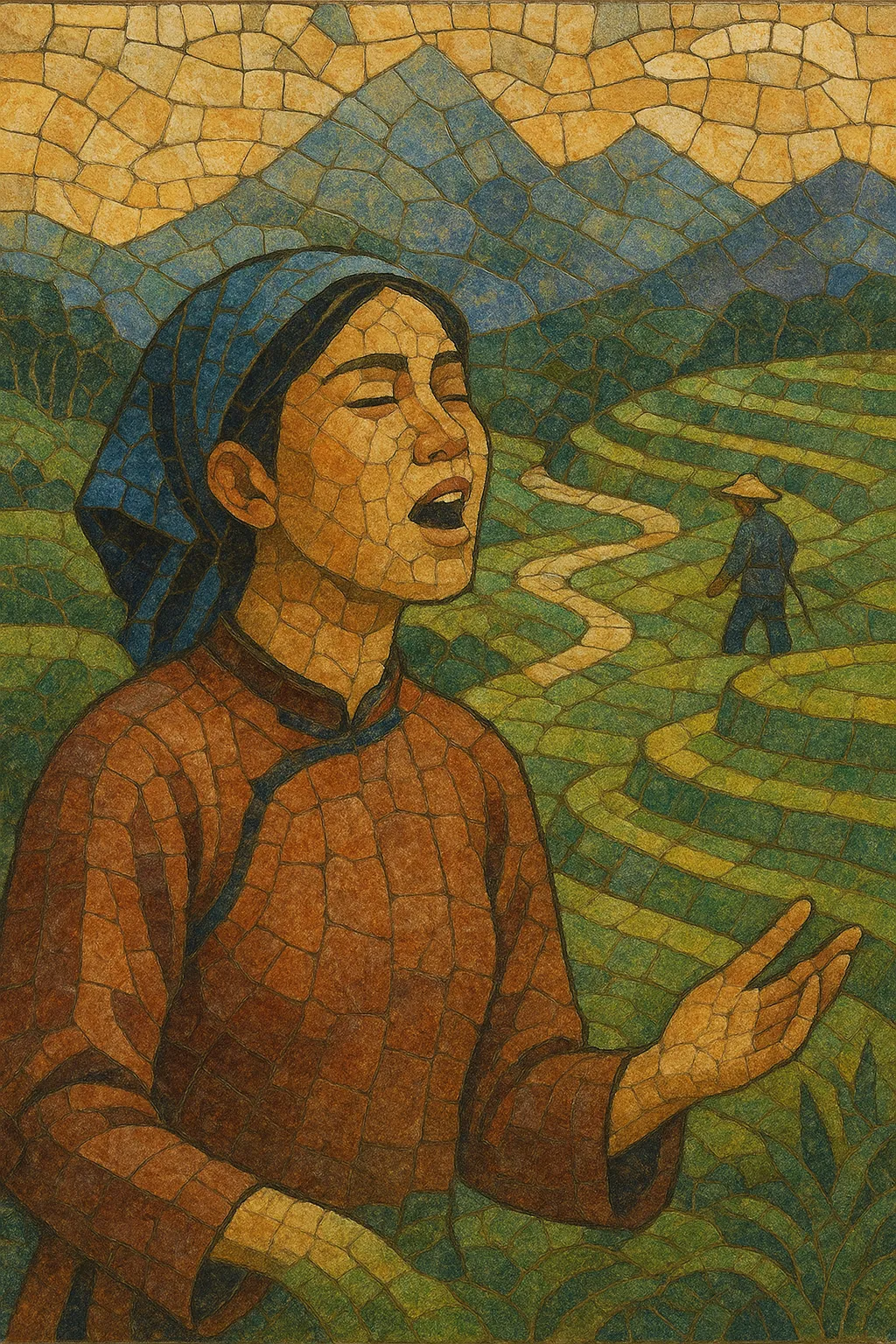Shan'ge (山歌, literally "mountain songs") is a broad family of Chinese rural folk songs traditionally sung outdoors across hills, rice terraces, and fields. It is characterized by powerful, open-throated vocal projection designed to carry over long distances, flexible rhythm, and melodies that largely follow pentatonic (five-note) scales.
Most shan'ge are performed a cappella, either solo or in antiphonal call-and-response between two singers—often as playful courting dialogues or witty verbal contests. Lyrics are improvised or semi-improvised, rich in metaphor, nature imagery, and local dialect expressions. While rooted in Han folk culture, vibrant mountain-song traditions are found across southern China (e.g., Guangxi, Guangdong, Fujian, Jiangxi), frequently intertwining with neighboring minority folk practices.
In modern contexts, shan'ge appears both in unaccompanied village performance and in arranged versions with simple folk ensembles (dizi flute, suona shawm, erhu, yangqin), as well as staged concert renditions that preserve the style’s soaring, melismatic vocal lines and robust projection.
Shan'ge likely coalesced as a recognizable set of practices during the late imperial period, though its roots are much older in agrarian work, courtship, and communal festivities. Sung on mountain paths, in tea terraces, and during market or festival days, these songs served social functions: coordinating labor, resolving flirtation through lyrical duels, and transmitting local wisdom in memorable, metaphor-rich couplets.
Southern China nurtured especially prominent shan'ge scenes. In Guangxi, antiphonal singing (including the Zhuang-famous Liu Sanjie lore) shaped public singing fairs on the third day of the third lunar month. Hakka and Minnan (southern Fujian) regions developed brisk, dialect-forward styles with agile ornamentation and high tessitura. Jiangxi and parts of Jiangnan maintain mellower variants with extended melisma and freer rhythm. While primarily Han in lineage, neighboring minority practices (e.g., Miao, Yao, Tujia) interfaced closely with the mountain-song ethos, encouraging cross-pollination of tunes and performance customs.
From the early 20th century to the PRC era, folklorists and conservatory scholars collected, transcribed, and arranged shan'ge into concert material, often for voice and Chinese folk orchestra. Media and festival stages popularized stylized renditions, yet village-centered, unaccompanied performance remains vital. Contemporary "Chinese style" pop and indie musicians sometimes quote shan'ge motifs, dialect cadences, or call-and-response structures, keeping the tradition audible in new urban contexts.
Despite staged versions, shan'ge remains fundamentally oral and improvisatory. Its continuity relies on communal memory, dialect storytelling, and singerly skill—especially breath control, sustained high notes, portamento, and quick-witted textual invention.


